Fiene Scharp
voids
-
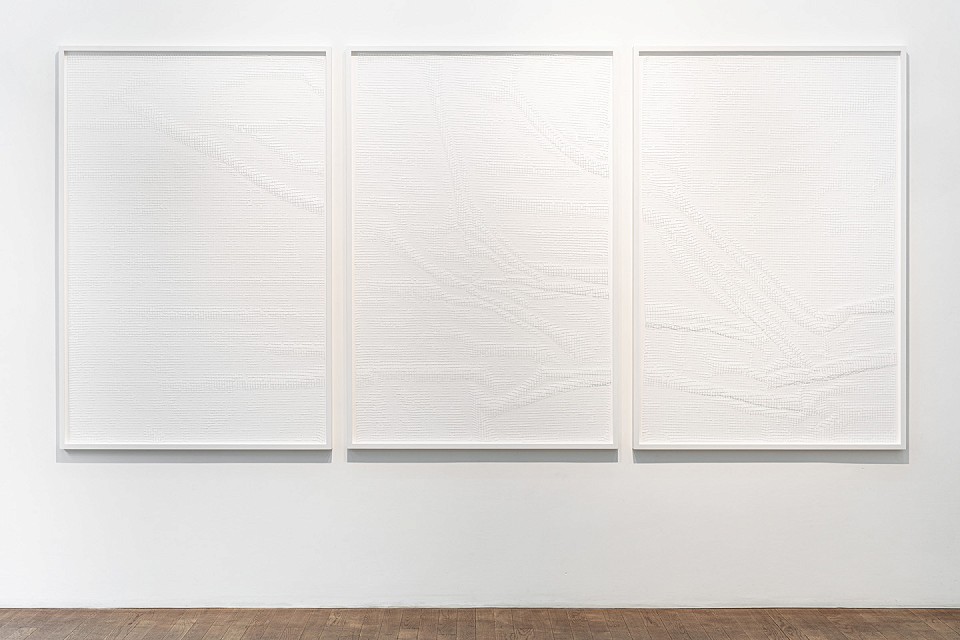
Fiene Scharp, voids, installation view
-
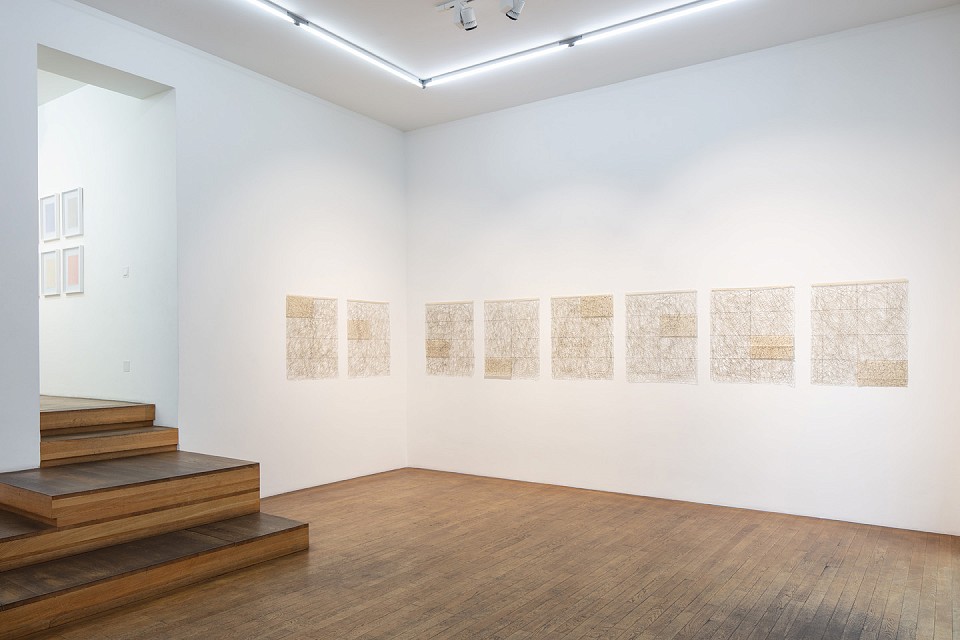
Fiene Scharp, voids, installation view
-
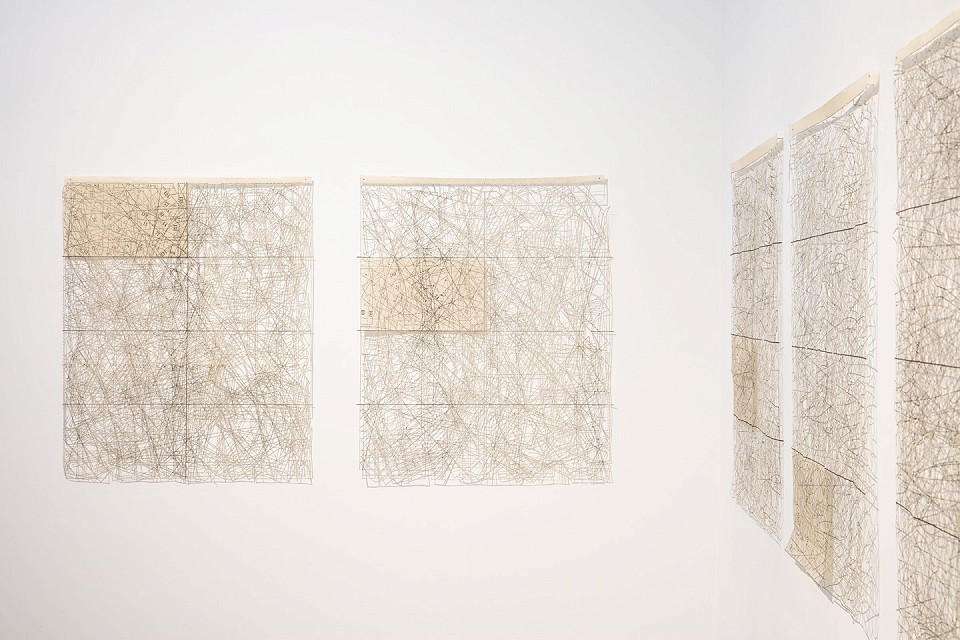
Fiene Scharp, voids, installation view
-
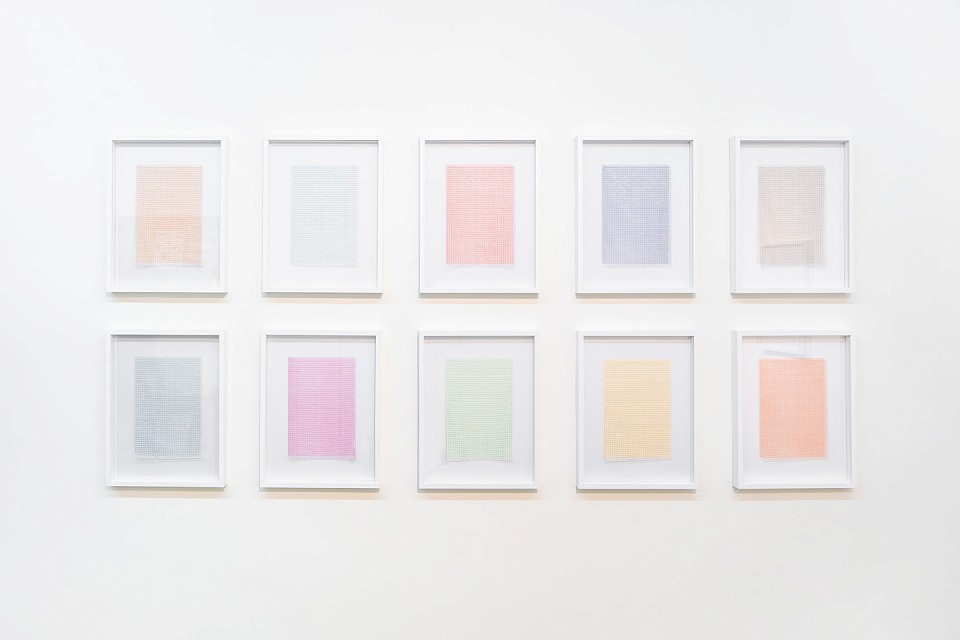
Fiene Scharp, voids, installation view
-
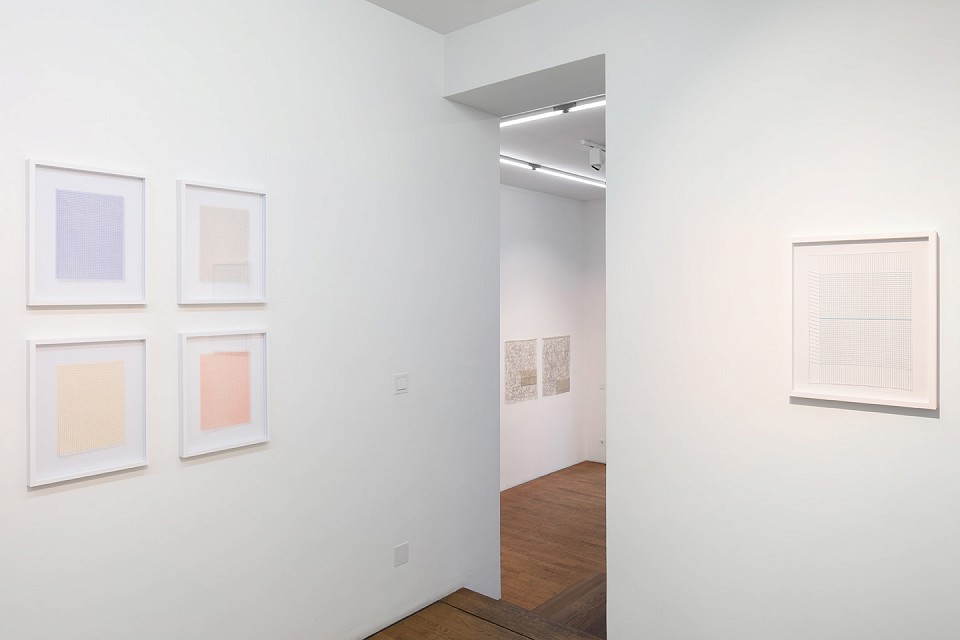
Fiene Scharp, voids, installation view
-
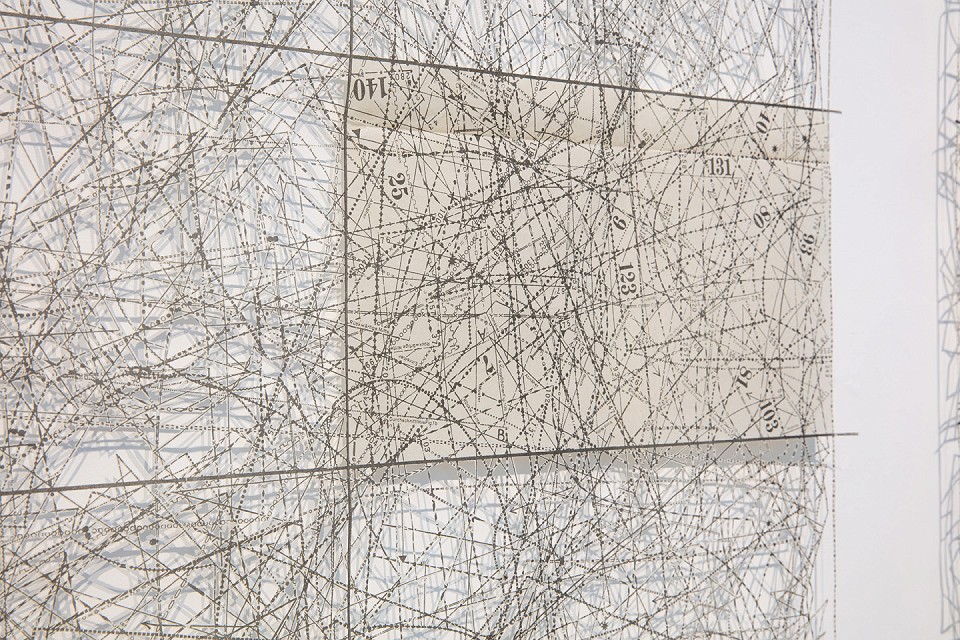
Fiene Scharp, voids, installation view
-
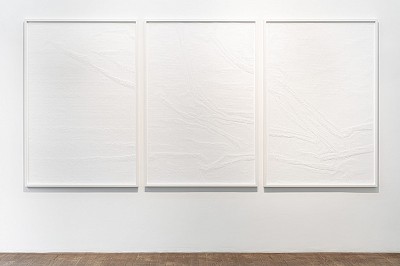
Fiene Scharp, voids, installation view
-
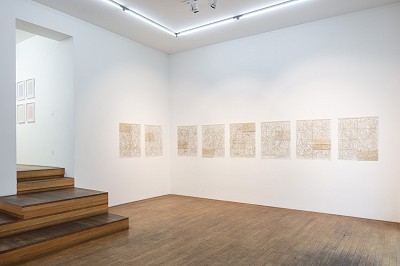
Fiene Scharp, voids, installation view
-
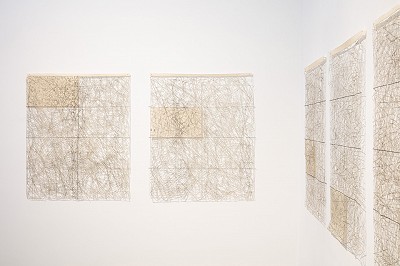
Fiene Scharp, voids, installation view
-
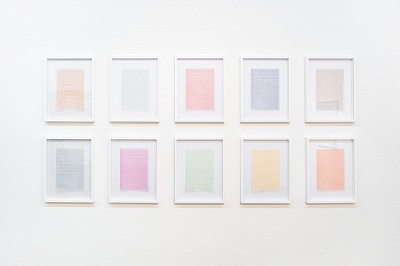
Fiene Scharp, voids, installation view
-
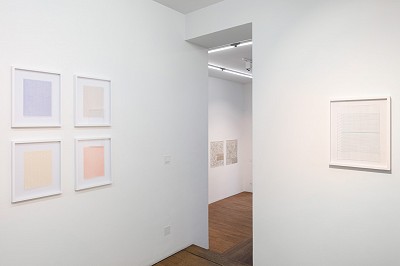
Fiene Scharp, voids, installation view
-
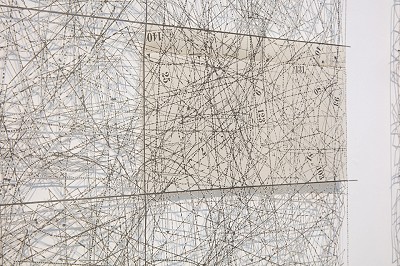
Fiene Scharp, voids, installation view
Fiene Scharp
VOIDS
Numerous voids, gaps, and cavities run like a common thread throughout the work of artist Fiene Scharp. Her paper cutouts are an expression of the ambiguity between repetition and difference, structure and chaos. Vintage grid paper from around the world, collected by the artist over the years, forms the underlying basis of these works: an old ledger with markings, grid paper, a music notebook, or sewing patterns—each paper type features a unique grid, a rhythm. By excising the interstitial spaces between lines, the artist brings out the fragility of the material; inconsistencies and irregularities are made visible.
For voids, her second solo show at Kuckei + Kuckei gallery, the artist presents two new series of color works and a white-monochrome triptych. Hard to discern from the wall itself, it occupies its spot there in a highly subtle and homogeneous manner. The work consists of wafer-thin paper, from which Fiene Scharp removed 1cm squares with a scalpel so that a delicate grid remains. She laid this form onto a white underground, affixing it so that a fold stretches across all three parts and connects the individual graph papers together. An interplay of light and shadow emerges inviting us to take a more detailed look. As the grid gets closer to the underground, its contours appear more distinct. But where it curves outward, it becomes harder to read. The contrast between background and paper cut is hardly noticeable anymore. A deliberate break is also created: the originally static, strictly geometric grid dissolves and flows across the white ground like a gentle wave. Created is a three-dimensional haptic structure that evokes associations to a cloth or another type of fabric. The grid becomes even more of an object here.
Forming a vibrant contrast to the triptych is a series of colorful graph papers. Here, too, the artist remains true to her technique by removing individual, half-centimeter squares and again leaving a fragile grid. This is offset on a diagonal over the untouched, unmarked paper—only a thin layer of glass separates the original from the handcrafted work of art. This creates a doubling and layering of the material, reinforcing its facade-like character. Here, too, the viewer is prompted to take a closer look. At first glance, the grid appears exact, accurate, and systematic, even machine-made. As you get closer to the works, their full impact unfolds, a result of their imperfection. Small mistakes have crept in, which can be traced back to the fragile materiality of the paper and the delicate, finely segmented grid. The thin paper webbings are partly torn, broken, or the corners frayed.
The third series of works in this exhibition is based on vintage sewing patterns from the 1930s. The yellowed, wafer-thin tissue paper hangs freely in front of the wall, allowing for subtle movements. Here the geometry of the series expresses a very clear order. Displayed are eight paper sheets, each of which are divided into eight, similarly sized square segments. This creates two columns and four rows; a classic grid is also seen here. Contrasting this order is chaos, a result in particular of the line variances within the individual segments. Their tangled structure causes them to fall out of the grid, so to speak. Numerous points of intersection, overlappings, and intertwinings are reminiscent of a finely structured, organic network such as the fascia surrounding muscle, or of plant fibers, or the infinity of the universe with its filaments and cavities. The exposed gaps, the voids, defy all the geometry and precise rigor; they negate the ever-present repetition in Fiene Scharp’s paper cutouts. Similar to the series of color works, the unaltered original and the artistic intervention are juxtaposed here as well—the process is therefore immediately apparent. In this series, Fiene Scharp accentuates the contrast between transparent and opaque, fragile and robust by allowing one segment per sewing pattern to remain. This occupies a different spot on each paper, thus creating a rhythm in the overall configuration of the series that also establishes an order and counters the random, chaotic lines of the cut-out elements.